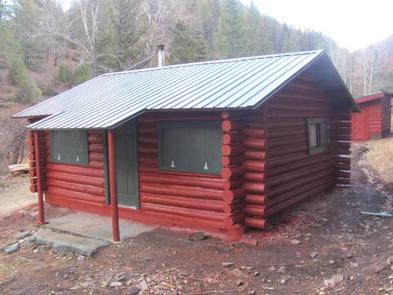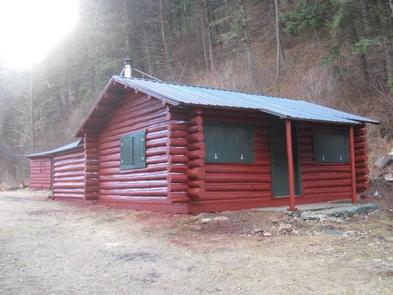Miller Cabin
Overview
The Miller Creek Cabin is located in the Townsend Ranger District and rests at the intersection of the Confederate Gulch Road (FS Road 287) and the Blacktail Road (FS Road 4171), surrounded by scattered forest in the Big Belt Mountains in west-central Montana. The cabin is accessible by high-clearance vehicle, but requires over-the-snow vehicle travel during winter months.
Please use caution when accessing Miller cabin in the winter months, winter access will vary based on snow conditions. Do not count on wheeled vehicle access from November through April. You can get to Miller cabin in the winter months with snowmobile or cross country skiing. It is not recommended driving full size vehicle to the site during this time period.
Recreation
During the summer months, enjoy a hike on local trails that will take you to high mountain lakes. During the fall, the cabin offers a wide array of recreation opportunities including hiking, hunting and off-highway vehicle access. The winter months provide for cross-country skiing and snowmobile opportunities.Facilities
During the summer months, enjoy a hike on local trails that will take you to high mountain lakes. During the fall, the cabin offers a wide array of recreation opportunities including hiking, hunting and off-highway vehicle access. The winter months provide for cross-country skiing and snowmobile opportunities.Natural Features
The cabin sits at the confluence of two drainages, Confederate and Blacktail Creeks. The site is shaded for most of the day with mature trees and shrubs.Nearby Attractions
Confederate Gulch is a steeply incised valley on the west facing slopes of the Big Belt Mountains. Its small stream drains westward into Canyon Ferry Lake on the upper Missouri River Valley near present day Townsend, Montana. In 1864 Confederate soldiers on parole from the American Civil War made a minor gold discovery in the gulch, but in 1865 the discovery of the sensationally rich Montana Bar - one of the richest placer strikes per acre ever made - led to other rich gold strikes up and down the gulch, and touched off a frantic boom period of placer gold mining that extended through 1869. From 1866 to 1869 the gulch equaled or outstripped all other Montana Territory mining camps in gold production, producing an estimated $19 to $30 million in gold - late 1860s money. For a time, the gulch became the largest community in Montana. In 1866 Montana had a total population of 28,000, and of these, about 10,000 (35%) were working in Confederate Gulch. The main community was Diamond City while gold production was at its height; Diamond City roared along both night and day.Activities
- Camping
Media

